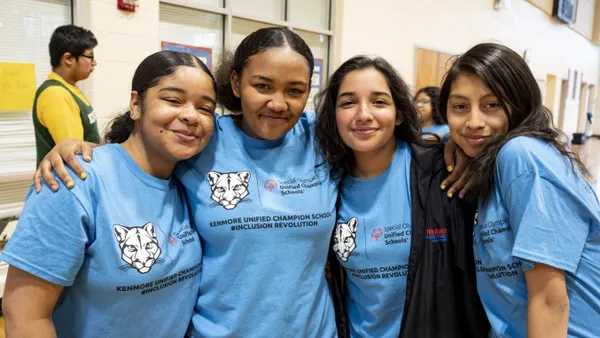Dive Brief:
- As school districts look for more ways to support students in foster homes, the Jennings School District near St. Louis has gone above and beyond by establishing “Hope House” — a 3,000-square-foot home where up to 14 students can be managed by a foster counselor — and has seen assessment scores increase as a result, District Administration reports.
- Other school districts are employing their own strategies to increase support, including mental health intervention teams, forming partnerships with local organizations, increasing professional development about the challenges facing foster students, and launching initiatives that provide extra funding to track the progress of foster students.
- Students in foster care are at special risk because they are often victims of trauma, and many require special education services. According to the National Working Group on Foster Care and Education, only about 60% graduate high school by the time they are 19, and they average missing five weeks of school annually.
Dive Insight:
Students in foster care are coming under increasing focus for two important reasons. For one, the foster care populations are increasing at an alarming rate. These numbers have increased for the fourth year in a row, primarily because of the increase in the numbers of family members addicted to opioids and other substances.
At the same time, new ESSA regulations are now in effect that specifically affect transportation issues that are now causing school districts to go to extra lengths to make sure students are able to stay in their “school of origin.” To meet these requirements, some districts are now using social workers to drive students to school.
Other ESSA requirements call for school districts to break out data about the academic performance and graduation rates of foster students. Doing so brings the challenges that face these students into sharper focus. As a result, school districts need to go improve measures to support these students and make sure they graduate.






 Dive Awards
Dive Awards







